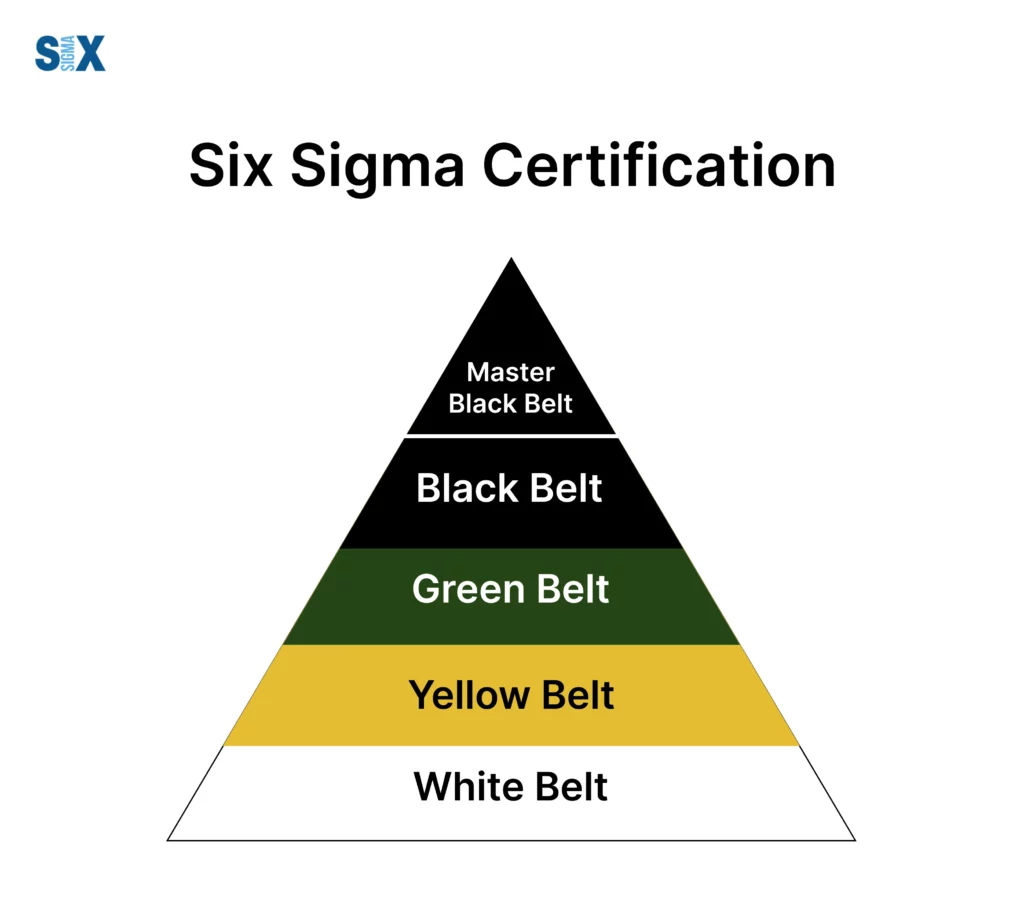Six Sigma Certification Cost: A Comprehensive Guide by a Master Expert
Six Sigma distinguishes itself as an exceptionally gifted resolution and refining framework.
From manufacturing refinement to business process streamlining and beyond, Six Sigma’s fundamentals illuminate intricate challenges profoundly – optimizing operations, boosting quality standards, and driving resolutions empirically.
Of course, any transformation harbors obstacles. For Six Sigma fluency, among the toughest presents is the certification’s attached price tag understandably.
From testing costs and training investments to prerequisites, certifications require substantive commitments undeniably.
However, rewards equal investments abundantly. This discussion explores certification expenditures insightfully.
Regardless of field, reflect on occasions where Six Sigma mastery meaningfully addresses problems or opportunities favorably through rigorous evidence-based methodologies. Its gifts in solving complexity deserve realizations wherever circumstances fit.
Key Highlights
- Understanding Six Sigma Certification Cost & Levels: From White Belt to Master Black Belt
- Decoding Six Sigma Certification Cost
- Lean Six Sigma: The Fusion of Efficiency and Quality – An insightful look at Lean Six Sigma certification, which combines the principles of Lean manufacturing with Six Sigma methodologies.
- Six Sigma Salary Ranges and Career Opportunities – An overview of the lucrative career paths and salary ranges awaiting Six Sigma professionals.
- Navigating Certification Providers: Evaluating Options and Selecting the Right Fit – A comprehensive guide to evaluating various certification providers, considering factors such as reputation, industry recognition, and alignment with your professional goals.
- Best Practices for Certification Success: Exam Preparation and Implementation Strategies – Proven tips and strategies for preparing for Six Sigma exams, as well as effective ways to implement Six Sigma principles in the workplace, ensuring you maximize the value of your certification.
- The Future of Six Sigma: Embracing Continuous Improvement – A forward-looking perspective on the evolving landscape of Six Sigma, emphasizing the importance of continuous improvement and the role of certification in driving organizational excellence.
Understanding Six Sigma Certification
Six Sigma is a powerful process improvement methodology that equips professionals with the tools and techniques necessary to drive quality management, defect reduction, and operational excellence.

Six Sigma Certification Levels
The Six Sigma certification journey is structured into five distinct levels, each representing a progressive mastery of the methodology and its applications.
The entry-level White Belt certification introduces the fundamental concepts of Six Sigma, while the Yellow Belt equips professionals with the basic knowledge required to participate in and support Six Sigma initiatives.
As you advance through the ranks, the Green Belt certification empowers you to lead targeted process improvement projects, employing the Define, Measure, Analyze, Improve, and Control (DMAIC) framework.
The Black Belt certification considered the pinnacle of Six Sigma expertise, equips you with the skills to spearhead enterprise-wide Six Sigma deployments, manage project teams, and drive strategic decision-making.
Finally, the coveted Master Black Belt status is reserved for those who have demonstrated exceptional leadership, innovation, and mastery of the Six Sigma body of knowledge, enabling them to serve as mentors and subject matter experts within their organizations.
Benefits of Six Sigma Certification
The benefits of Six Sigma certification extend far beyond the realm of professional development.
Armed with a deep understanding of data-driven decision-making and defect-reduction techniques, certified professionals become invaluable assets to their organizations, driving process optimization, cost savings, and enhanced customer satisfaction.
Moreover, Six Sigma certification opens up a world of career opportunities across diverse industries, from manufacturing and engineering to healthcare and finance.
As organizations increasingly recognize the value of Six Sigma methodologies, certified professionals often enjoy accelerated career trajectories, higher earning potential, and the ability to make a tangible impact on their organizations’ bottom line.
The Six Sigma Certification Cost
While the benefits of Six Sigma certification are undeniable, it’s crucial to understand the associated costs to ensure a well-informed and strategic investment in your professional development.
The Six Sigma certification cost(s) encompass exam fees, training expenses, and potential prerequisites, which can vary depending on the certification level and the certifying body.
6sigma.us Certification Costs
6sigma.us is one of the leading providers of Six Sigma certification globally.
6sigma.us offers a range of certification options, from the complimentary White Belt certification to the prestigious Master Black Belt level, with costs varying accordingly.
The 6sigma.us White Belt certification costs $299, the Yellow Belt certification carries a fee of $998, while the Green Belt Certification costs $2850
The Black Belt certification is available at two levels, with the basic level priced at $3250 and the advanced levels costing $4975
It’s important to note that certain certification levels may have prerequisites, such as project completion or industry experience, which should be factored into your overall investment.
Training and Preparation Costs
Alongside the exam fees, it’s crucial to consider the costs associated with training and preparation.
While self-study is an option, many professionals opt for structured training programs or workshops to enhance their understanding of Six Sigma principles and increase their chances of certification success.
These training programs can vary in cost, with some providers offering comprehensive packages that include course materials, process mapping tools, and simulation exercises.
Additionally, some organizations may cover or subsidize the cost of Six Sigma training for their employees, making it essential to explore internal professional development opportunities.
Lean Six Sigma Certification: Combining Efficiency and Quality
As the business landscape continues to evolve, the fusion of Six Sigma methodologies with Lean manufacturing principles has given rise to Lean Six Sigma certification.
This powerful combination aims to eliminate waste, enhance process efficiency, and drive continuous improvement while maintaining a relentless focus on quality and customer satisfaction.
Lean Six Sigma Belts and Requirements
Similar to traditional Six Sigma certification, Lean Six Sigma follows a belt-based structure, with White, Yellow, Green, and Black Belt levels.
However, the requirements and curriculum are tailored to incorporate Lean principles, such as value stream mapping, waste elimination, and continuous flow optimization.
Professionals seeking Lean Six Sigma certification must demonstrate proficiency in both Six Sigma tools and Lean manufacturing concepts, enabling them to identify and eliminate non-value-added activities while optimizing processes for maximum efficiency and quality.
Lean Six Sigma Certification Cost(s) and Salaries
Lean Six Sigma certification cost(s) are generally aligned with those of traditional Six Sigma certification, with variations depending on the certifying body and the specific belt level.
However, the potential rewards of Lean Six Sigma certification are substantial, as certified professionals are highly sought after in industries prioritizing operational excellence and continuous improvement.
Furthermore, organizations that successfully implement Lean Six Sigma methodologies can realize significant cost savings and productivity gains, investing in certification as a strategic one.
Salaries and Career Opportunities for Six Sigma Professionals
One of the most compelling aspects of Six Sigma certification is the array of lucrative career opportunities it opens up, spanning diverse industries and functional areas.
As organizations increasingly recognize the value of process optimization and data-driven decision-making, the demand for Six Sigma professionals continues to soar.
Continuous Improvement Specialist
Certified Six Sigma professionals are ideally positioned to take on roles as Continuous Improvement Specialists, where they can leverage their expertise in workflow optimization strategies and business process improvement methodologies.
In this capacity, they work closely with cross-functional teams to identify inefficiencies, streamline processes, and drive operational excellence.
Project Management and Engineering Roles
The structured approach and data-driven mindset cultivated through Six Sigma certification make certified professionals highly sought after for project management and engineering roles.
In these positions, they can apply their knowledge of process mapping, statistical analysis, and manufacturing process optimization to ensure projects are delivered on time, within budget, and to the highest quality standards.
Emerging Fields: AI, IoT, and Beyond
As technology continues to reshape industries, Six Sigma professionals are well-equipped to thrive in emerging fields such as Artificial Intelligence (AI), the Internet of Things (IoT), and data analytics.
Their proficiency in statistical process control and cross-functional collaboration make them invaluable assets in developing and optimizing intelligent systems, data-driven processes, and cutting-edge applications.
Choosing the Right Six Sigma Certification Provider
With numerous certification providers and training organizations in the market, selecting the right partner for your Six Sigma journey is crucial. This decision can impact the quality of your education, the recognition of your certification, and ultimately, your career prospects.
Selecting the Appropriate Certification Level
Choosing the appropriate certification level is equally important.
While the White and Yellow Belt levels may be suitable for those seeking a foundational understanding of Six Sigma, professionals aiming for leadership roles or enterprise-wide deployments may need to pursue Green Belt or Black Belt certification.
Additionally, organizations may have specific certification requirements for certain roles or projects, making it crucial to align your certification goals with your career aspirations and organizational needs.
Best Practices for Six Sigma Certification and Implementation
Obtaining Six Sigma certification is merely the first step in a journey of continuous improvement and operational excellence.
To maximize the impact of your certification, it’s essential to adopt best practices for exam preparation, implementation, and ongoing professional development.
Preparing for Six Sigma Exams
Successful Six Sigma certification hinges on thorough exam preparation.
This may involve enrolling in structured training programs, leveraging online resources and study materials, or seeking guidance from mentors and subject matter experts.
Additionally, familiarizing yourself with waste elimination techniques, process mapping tools, and case studies can provide invaluable context and enhance your understanding of the Six Sigma process improvement methodology.
Applying Six Sigma Principles in the Workplace
Once certified, the true test lies in effectively applying Six Sigma principles in the workplace.
This may involve leading or participating in process improvement projects, mentoring teams, and continuously refining your skills through ongoing professional development opportunities.
Collaboration and knowledge-sharing are key to sustaining Six Sigma initiatives, as is fostering a culture of continuous improvement within your organization.
By consistently demonstrating the value of Six Sigma methodologies, you can position yourself as a catalyst for positive change and operational excellence.
The Future of Six Sigma: Embracing Continuous Improvement
Six Sigma certification undoubtedly retains potency in navigating quality leadership and refinement across industries going forward.
However, landscapes evolve continuously, necessitating flexible approaches and maintaining advantages.
Technological progressions, client preference shifts, and international market dynamics will undoubtedly sculpt optimization and continual betterment pursuits dynamically.
By embracing perpetual progression and conscientiously heeding the latest quality management and process advancement methodologies, the certified equip themselves as enterprises’ most prized assets undeniably.
Moreover, heightened operational excellence demands foreseeably broad certification applicability beyond established domains – unleashing novel resolutions and cross-discipline alliances.
Embracing alterations and tackling emerging intricacies prove imperative to sustaining certification’s relevance and impacts moving ahead. Progress necessitates responsiveness to ever-morphing conditions victoriously.
SixSigma.us offers both Live Virtual classes as well as Online Self-Paced training. Most option includes access to the same great Master Black Belt instructors that teach our World Class in-person sessions. Sign-up today!
Virtual Classroom Training Programs Self-Paced Online Training Programs







